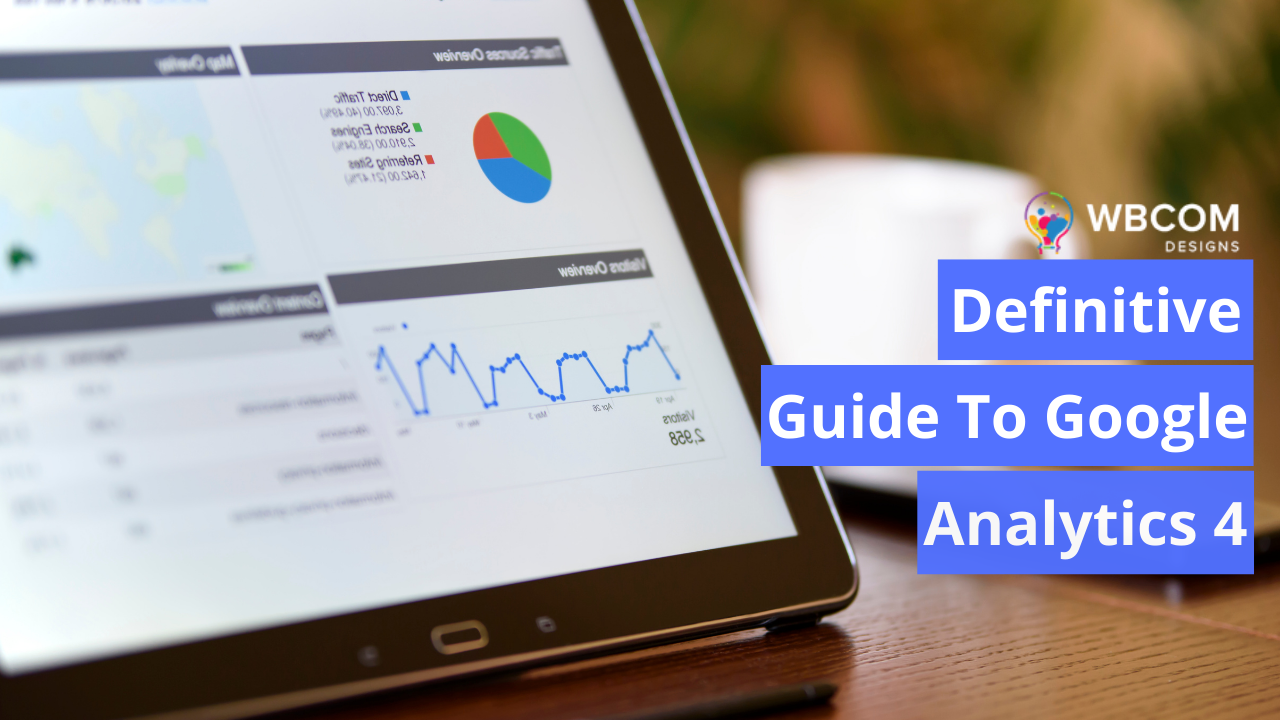Data from Google Ads, social media, referrals, and other sources may all be compiled in one convenient place with the help of Google Analytics, a free service provided by Google. This opens the door to monitoring site users’ actions, interactions, and patterns of use. Google Analytics 4 is one of the best tools available to digital marketers and SEO experts since it keeps track of historical and real-time data. It provides information that can be used to plan a strategy.
Table of Contents
ToggleWhat is GA4 (Google Analytics 4)?
Google Analytics 4 is the newest analytics product. In addition to tracking how many people visit your site or use your app, you can also see how active they are on the site. You can use these analytics to guide its development to guarantee that your digital presence is optimized to produce results. By July 1, 2023, GA4 tracking will be required by default.
What’s new about Google Analytics 4?

There are quite several exciting new features that you’ve been enjoying since GA4’s release, including:
1. Event-based monitoring
A feature that will take some getting accustomed to, event-based tracking delivers a regular data structure across online and app reporting.
Rather than relying on page views, sessions, and users, you’re now learning how to talk about events and parameters. While more sophisticated, it grants more leeway and flexibility, giving you access to finer-grained information.
2. Predictive reporting
Using GA4’s machine learning algorithms and cutting-edge AI technology, you can now instantly (and precisely) generate revenue estimates, conversion probability, and average churn rates from acquired data, allowing you to forecast more accurately than ever.
Targeting high-value consumers or those who may be on the verge of leaving your service is made more accessible by being able to export these bespoke audiences to Google Ads and the Google Marketing Platform.
3. Improved privacy controls
GA4 was created from the ground up with privacy in mind. It will help you stay GDPR compliant while giving you fine-grained control over which users you collect data from and how that data is used in advertising campaigns. This framework allows GA4 to swiftly add to its existing powerful privacy measures, presumably ensuring smooth expansion.
4. No cost to export data from BigQuery
Even as a free user, you can now import non-sampled data into BigQuery. This opens up new possibilities for reporting and gives you total control over how you analyze your data.
5. Create and keep tabs on up to 300 events
Good news: you won’t have to hire a developer whenever you want to keep tabs on something! GA4 automatically tracks the vast majority of important events, and adding new events as needed is simple. It is a lot of toot 300 of this per site, but it should be enough for most businesses.
Also Read: Hire Best Contractor SEO Agency
6. Web and app views in one

Have you ever wished there was a centralized location from which you could report on your website’s performance and apps? You may do that now.
Maintaining a centralized location for all necessary items streamlines this procedure immensely. It used to be required to compile these reports from several sources. Having them all in one place makes report generation and delivery much more efficient.
Also Read: How to add Google Analytics to WordPress?
7. Anomaly Spotting
GA4’s anomaly detection utilizes machine learning and AI technology to automatically identify strange occurrences on your website or app and provide reports on statistically significant results.
An outlier might be if your website typically generates 500 leads per day from a given campaign, but on one particular day, it generates zero.
Google Analytics anomaly detection is based on learning from a subset of past data (this takes about 90 days). This background information is a benchmark for the anomaly detection algorithm to evaluate future results.
Exploration is a free add-on that lets you quickly create line graphs and other helpful reports that you can share with the rest of your team.
Also Read: 5 Must Known Tips On Keyword Brainstorming For SEO
GA4 vs. Universal Account: What’s the Difference?
However, the primary distinctions between UA and GA4 lie in the respective methods employed for doing so (users and events). Let’s compare and contrast the main features of the two.
- In UA, many hits exist, including page views, events, social interactions, purchases, e-commerce, user timing, and exceptions. In GA4, these actions are known as events.
- In GA4, each hit type is an event, but in universal accounts, each label, category, action, and hit type has its unique name. Like any user activity, a page view is an event. It doesn’t specialize in any particular kinds of hits.
- Screen and Page Views: In GA4, page views for Universal Accounts were tallied as page views. Views on individual pages can be tracked automatically by Google Tag Manager without the need for any additional tags or triggers.
- In computing, a session is a period during which several user actions are recorded. In a global account, a session comprises different measures taken over the same period, such as viewing several pages, interacting with others socially, experiencing events, and making purchases. A session is defined by UA as when there has been no activity for 30 minutes, or a new event occurs. GA4 sessions are based on the session start event, captured by default.
How they record information is another critical contrast between the two. GA4 will begin to lessen Universal Account’s dependency on cookies by employing machine learning to “fill in the gaps” where user consent is not supplied for monitoring, making it more stable and eliminating future gaps in your data.
Also Read: Add Profile Privacy | BuddyPress Powered WordPress Community Website
Google Analytics 4: How to set it up?

Multiple methods exist for integrating GA4 into a website’s infrastructure, allowing for immediate access to analytical data. It is possible to switch to GA4 if you already have a UA account set up for your website. Let’s start by looking at how to create a brand-new Google Analytics account.
- Visit Google Analytics and sign in using your Gmail account.
- Double-click the measurement icon to get started.
- Create an account and log in.
- The account name can be anything you choose.
- Include the name of your website in the description of the home.
- You’ll need to choose a location, time zone, and currency.
- Until it ceases working entirely, the option to create a “Universal Account” (UA) will be available in the settings for advanced features.
- Following this, choose the appropriate number of employees and industry based on the information provided on your business’s website or in step 8.
- Please select your nation from the drop-down menu, check the box, and click “I accept.”
- Move on to the following step, where you can choose to keep things as they are or change them to your liking.
Select a data-tracking system. - Click “Create Stream,” enter the website’s or app’s URL, and describe it.
- Reveals the measurement ID, which begins with “G,” along with other options for implementing the tag on your site.
You can either insert the tag in the website’s head or use Google Tag Manager to add a measurement ID. Remember that you need a GTM (Google Tag Manager) account for your website before you can add tags through Google Tag Manager. When you’re done, give the system at least a couple of days to start recording data.
Also Read: Best eCommerce Data Analytics Software
Conclusion of Google Analytics 4
In July 2023, Google Analytics 4 (GA4) will replace Universal Analytics (UA). Enhanced tools for business owners and marketers are included in this release, which also places a premium on protecting individual privacy.
With GA4, you can now use AI-powered insights and predictions to boost the effectiveness of your advertising initiatives. Also, it helps stop fake traffic and gives you fine-grained control over the data you collect and how it’s used.
Intersting Reads:
12 Tips To Use Google Docs Effectively: Tricks Everyone Should Know








